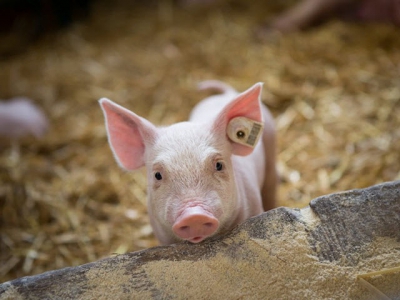Provimi creates age-based swine feeding system

Piglet digestive development, rather than weight, guides a new feeding program developed by Provimi to reduce rates of early mortality in weaned pigs.
The animal nutrition and services company announced the launch of the new feeding system, Nurture, as a way to address the wean-to-finish death rate in piglets. That rate can be up to 10%.
Provimi is a subsidiary of Cargill and provides customized products and services for producers globally, supported by Cargill’s research and portfolio.
The focus of the nutritional strategy is to help producers raise more live pigs through the nursery stage, according to information from Provimi. The system was developed based on research looking at piglet diet and age.
The recently established piglet feeding and support system provides producers a new way to consider piglet nutrition, said Kathryn Price, swine nutritionist and monogastric product manager with Provimi.
“As an industry, we have focused on feeding young pigs based on their weight – however, a 19-day-old pig has a 19-day-old digestive tract, no matter its weight,” she told FeedNavigator. “With the digestive tract still developing at weaning, working to feed the right profile of ingredients and nutrients to help pigs transition from sows’ milk to feed is crucial to stimulating gut development and supporting beneficial bacteria.
“Looking at young pig nutrition in this way has allowed our team to bring livability to the forefront of our nutrition, helping customers get more live pigs through the nursery stage and set up for future success all the way to market,” she added.
The Nurture program seeks to match the nutrition being provided to the pig with the animal’s physiological maturity rather than its eating habits before weaning, said Jim Jolliff, swine nutritionist with Provimi.
Focusing on age-appropriate feed
The development of the new complete feed program and its related technologies came from the identification of a need within the swine industry, Price said. “Producers need to get more live, healthier pigs to market in order to be successful – and with challenges like the lack of skilled labor and the cost of mortality, this is becoming an even greater challenge,” she added.
“Our team researched ways to combat these challenges, finding that age played a huge role in developing the right nutrition to accomplish these goals,” she said. “As we looked at that goal, it wasn’t about developing a specific product or even the program – it really was about the philosophy to help raise nursery pigs better.”
The focus on piglet age came out of company research findings, added Jolliff.
“During several trials conducted at our research facility, results showed that pigs of different ages, but similar weights (within one pound) will have over a four-pound difference in weight at the end of the nursery period if fed the same way,” he told us. “It was very clear we needed to take into account the age of the pig to really make a difference in getting them ready for the next phase.”
A pig’s digestive ability changes drastically as the piglet ages from seven to 35 days, according to company information. Enzymes able to digest corn and soybean meal efficiently become more active as the piglet ages.
There have been positive results following testing of the production and feeding system in the field or during challenge conditions, Jolliff said. Piglets appear to be eating better and are demonstrating improved average daily gain.
“Getting pigs eating quickly to transition well through the entire nursery phase is key,” he said. “Our continued goal is to reduce the percentage of fall behind pigs, meaning less time pulling and treating pigs.”
System uses and implementation
The feeding program focuses on addressing challenges with livability and young animal performance as well as issues linked to pigs having ‘slow starts’ or a dearth of skilled labor at a facility, said Jolliff.
The system has a series of options for piglets starting at weaning and varied by the animal’s age and weight, said Price. The elements are designed to support the typical flow of development, and a supplemental series of options for piglets facing health challenges are also available.
Related news
 Preweaning mortality a complex issue
Preweaning mortality a complex issue A few of the factors Ellis highlighted as possible causes of increased PWM include increasing litter sizes, increasing numbers of stillbirths
 Zinc, not arginine may boost piglet growth, oxidative status
Zinc, not arginine may boost piglet growth, oxidative status Adding supplemental zinc may boost piglet growth and oxidative status, while supplemental arginine in feed has a limited influence on oxidative status or piglet
 Field cress tested as new protein source for pigs
Field cress tested as new protein source for pigs Study indicates that field cress seedcake could be appropriate feed for pigs, but high levels of glucosinolate and insoluble fiber need further evaluation.